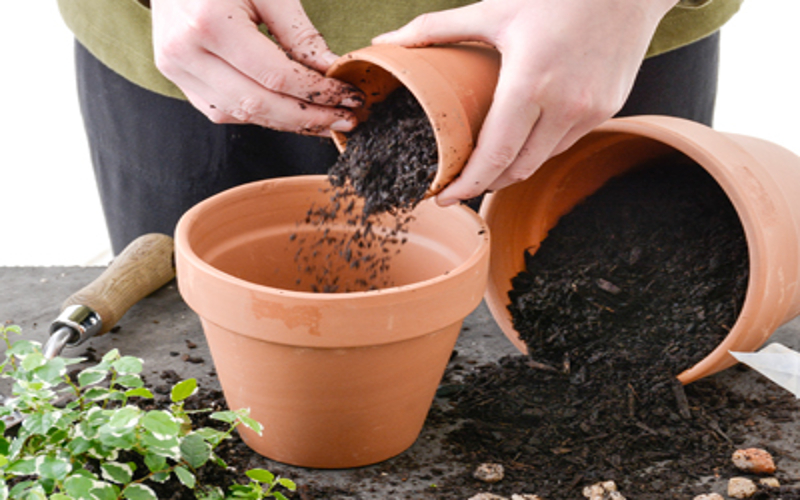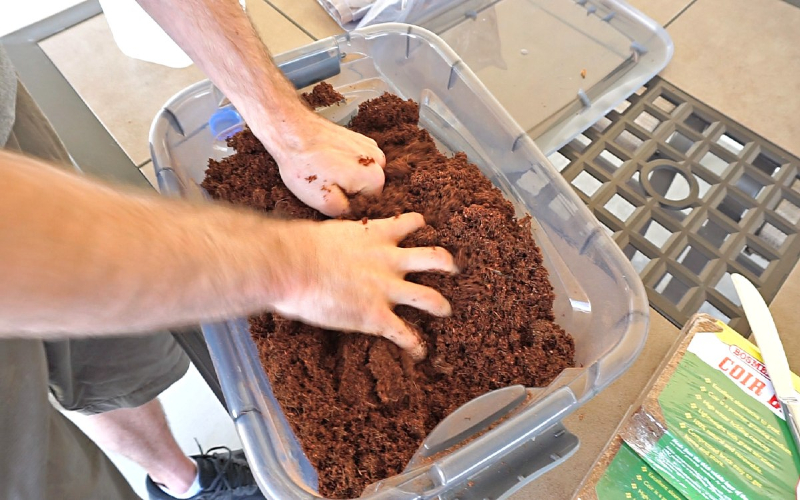How to reuse coco coir: Everything you need to know
How to reuse coco coir: Everything you need to know

If you grow your plants in coco coir, you know how awesome this medium is. The material is firm, environmentally friendly, and almost impossible to overwater. Not to mention it has the perfect pH level for hydroponic growing. To add up to this amazing list, you can reuse the product as well. Wondering how you can reuse your coco coir? Let’s find out with Tropicoco Vietnam right in this article!
Benefits of reusing coco coir
Reusing coco coir is a beneficial practice not only for you, but also to the environment. Discover all the advantages you can gain down below:
Save time and money
When you reuse your coco coir, you get to save your budget. After all, the less coco coir you buy, the less money you have to spend. This activity will also help you save a lot of time. When you decide to reuse the material, you no longer have to visit the gardening supply store too often. This means you can save both your time and energy effectively.
 Environment-friendly
Environment-friendly
Coco coir is a more eco-friendly option compared to Rockwool or any peat-based growing media. Even though peat is great for plants, the process of extracting it is harmful to the environment. At the same time, Rockwool is an artificial material that cannot decompose. For this reason, the material is terrible for the environment as it can sit within the soil for years without showing any signs of dissolving. Overall, by choosing to reuse coco coir, you have made an effort to protect the planet in the long term.
Things to consider before reuse your coco coir
Before deciding to reuse your coco coir, there are two critical factors you must first consider. Let’s find out what they are with Tropicoco Vietnam down below:
Structure of coir
When considering the structure, it is key to look at their physical attributes. Coco coir tends to deteriorate a lot faster after being reused, especially for those that have been washed or chemically buffered. The product’s sponge-like structure becomes smaller and deformed at this rate as it is heading towards the end of its life cycle. This results in less space for air and water retention. Therefore, when you reuse your coco coir for the third/fourth time, you should add 10-20% fresh coir or perlite for a successful harvest.
Pathogen history
When deciding to reuse coco coir, the pathogen history is a crucial aspect to consider. This factor is important as it can determine the crop’s overall condition and reaction. Even a small trace amount of pathogens can cause your coco coir to be unfit for successful growing. Therefore, be extra picky when choosing coco coir to reused based on their pathogen history.
How to reuse your coco coir properly?
 Even though the product can be reused, be careful to do so. The rule is to only reuse coco coir that has been thoroughly reconditioned. Otherwise, your new crops will be exposed to everything in your last grow, including potentially harmful pests and pathogens. Also, if you do not bother to break down all the roots from the previous crop, your next one will be fighting those remnants for space to grow in the coir.
Even though the product can be reused, be careful to do so. The rule is to only reuse coco coir that has been thoroughly reconditioned. Otherwise, your new crops will be exposed to everything in your last grow, including potentially harmful pests and pathogens. Also, if you do not bother to break down all the roots from the previous crop, your next one will be fighting those remnants for space to grow in the coir.
Steps to recondition coco coir
To reuse your coco coir, you must recondition it beforehand. If you skip this step, your next crop may be facing issues that are tough to correct (e.g salt toxicity). Down below is a complete guide on how to recondition your coir:
- Break it up and physically remove any remaining roots in the coco coir.
- Wash the coir in distilled water. There will be a lot of salts in it, so you need to flush them out thoroughly.
- Soak the coco coir in Sensizym solution to get rid of any decaying roots left from your last crop. It is key not to leave dead roots in the media as they can create an anaerobic environment.
- After the root material has been discarded, the coco coir must be washed using either a low EC nutrient solution or water. This practice helps bring back the nutrient levels that were left out from the entire process.
- Your old coco coir is now ready to be reused again.
What else do you need to know?
After each crop cycle, minerals and chemical compounds used to nurture them accumulate in the growing media. One of these minerals happens to be salt. Too much salt in coco coir can block nutrients from reaching your crops, resulting in a nutrient lockout. A salt-based nutrient lockout is equal to a nutrient deficiency. Both of them cause crops’ leaves to be discolored and wilt. If being left untreated, the nutrient lockout can kill your crop within the fastest time possible.
Also, as the product is reused, it loses some of its lignin structure. Because of this, most growers only reuse coco coir two or three times before replacing it. Meanwhile, some growers choose to mix new coir into old ones to extend its life. Overall, to a certain point of reusing, your coco coir will begin to break down and won’t be as capable of holding roots or maintaining an optimal moisture level.
Conclusion
Now that you have known how to clean and reuse coco coir effectively, you can save money on your next crop. If you want to read more articles related to coco coir, visit Tropicoco Vietnam’s blog daily. Also, Tropicoco is specialized in supplying high-quality coir worldwide. Want to know more? Contact the business down below to receive buying rules and exclusive deals today!
Contact information
Tropicoco – The best substrate
Address: No.20 Ngan Long Villa, Nguyen Huu Tho Street, Nha Be District, Ho Chi Minh City
Email: giathe@tropical.vn
Hotline: +84 983230879
Open Hours: Mon-Sat: 8.00AM-5.00PM; Sunday: Closed

